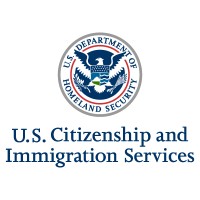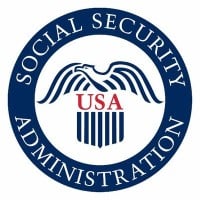Company Details
uscis
4,841
175,946
92
uscis.gov
0
USC_4699693
In-progress

USCIS Company CyberSecurity Posture
uscis.govOfficial LinkedIn account of U.S. Citizenship and Immigration Services.
Company Details
uscis
4,841
175,946
92
uscis.gov
0
USC_4699693
In-progress
Between 700 and 749

 USCIS Global Score (TPRM)
USCIS Global Score (TPRM)XXXX

Description: The article highlights systemic vulnerabilities in the **E-Verify system** (administered jointly by USCIS and SSA), where **Social Security Numbers (SSNs)**—critical for employment verification, credit applications, and government benefits—are at risk of exploitation in **identity theft schemes**. While the article promotes proactive measures like SSN locks and credit freezes, it implicitly reveals that **unauthorized access to SSNs via data breaches or phishing** could enable criminals to impersonate individuals for fraudulent employment, tax refunds, or benefit claims.The **E-Verify Self Lock feature**, though a protective tool, underscores a reactive approach to a persistent threat: **leaked or misused SSNs** due to inadequate safeguards in government databases or third-party breaches. The reliance on manual locks (expiring annually) and credit freezes suggests **gaps in automated, real-time fraud detection**, leaving individuals responsible for mitigating risks. The potential for **large-scale SSN exposure**—whether through insider threats, system exploits, or external attacks—poses a **direct risk to financial stability and public trust** in federal identity verification infrastructure.The article’s emphasis on **post-breach mitigation** (e.g., IRS identity protection PINs) rather than prevention implies that **SSN-related breaches are frequent enough to warrant systemic warnings**, signaling a **high-stakes vulnerability** in a foundational component of U.S. identity management.


USCIS has 53.85% more incidents than the average of same-industry companies with at least one recorded incident.
USCIS has 56.25% more incidents than the average of all companies with at least one recorded incident.
USCIS reported 1 incidents this year: 0 cyber attacks, 0 ransomware, 0 vulnerabilities, 1 data breaches, compared to industry peers with at least 1 incident.
USCIS cyber incidents detection timeline including parent company and subsidiaries

Official LinkedIn account of U.S. Citizenship and Immigration Services.


The Ministry of Health (MOH), by way of its objectives, policies and projects included in this strategy, seeks to accomplish a promising future vision; namely, delivering best-quality integrated and comprehensive healthcare services. Carrying health conditions or health status of Saudi inhabitants t

Overview The Texas Health and Human Services Commission (HHSC) is an agency within the Texas Health and Human Services System. In September 2016, Texas began transforming how it delivers health and human services to qualified Texans, with a goal of making the Health and Human Services System more ef

The OFFICIAL careers page for the South Australian Government. The South Australian Public Sector is the State's largest workforce. We are an employer of choice that reflects the diverse community we serve. Our people are from a range of backgrounds and vocations, from entry level, mid-career and

De organisatie bestaat uit diverse onderdelen, waaronder de Belastingdienst, Douane, Toeslagen, FIOD en enkele facilitaire organisaties. Met ruim 30.000 medewerkers werken we in kantoren die verspreid zijn over het hele land. Gezamenlijk heffen, innen en controleren we belastingen. Daarnaast zorgen

The Government of Canada works on behalf of Canadians, both at home and abroad. Visit www.Canada.ca to learn more. Canada’s professional, non-partisan public service is among the best in the world, and many of its departments and agencies place in Canada’s Top 100 Employers year after year. If you

Social Security provides financial protection for our nation’s people, supporting more than 64 million individuals and families. With retirement, disability, and survivors benefits, Social Security is one of the most successful anti-poverty programs in our nation's history. We are there throughout

Californians deserve a government that works for them and with them. One that will work to ensure opportunity and justice. We are building a California not for the few, but for all — including those who have historically been left out. We are doing the work to make our state a place for every Cali

Bij UWV werken we aan een samenleving waarin iedereen mee kan doen. We helpen mensen op weg bij het vinden of behouden van werk. In geval van ziekte kijken we wat iemand nog wél kan. En als werken niet mogelijk is, zorgt UWV snel voor inkomen. We geven op deskundige en efficiënte wijze uitvoering a

The Department of Education is responsible for delivering the Victorian Government’s commitment to making Victoria the Education State, where all Victorians have the best learning and development experience, regardless of their background, postcode or circumstances. Education remains a cornerstone f
.png)
Career paths in management, information technology, law, mission support, public affairs and community outreach are available within the agency.
Evolver has announced the appointment of Nidhi Panchasara as Vice President of Cybersecurity. In this role, Panchasara will direct Evolver's...
News News: USCIS has discontinued cheque and money order payments for immigration filings, mandating electronic debit via Form G-1650 for...
The US Department of Homeland Security has shifted hundreds of national security specialists, including cyber personnel, into jobs that...
US Immigration and Customs Enforcement (ICE) is seeking contractors to trawl social media and other open-source data for potential...
The Department of Homeland Security (DHS) celebrated major recognition at the 8th Annual Service to the Citizen Awards, with three separate...
The National Governors Association has signed onto a letter, with the leading organizations representing state and local government,...
Shane Barney, the former CISO at USCIS and currently the CISO for Keeper Security, said the move to zero trust received wide support from...
The Cybersecurity and Infrastructure Security Agency (CISA) has tapped seasoned government technology and security leader Jeff Conklin as...

Explore insights on cybersecurity incidents, risk posture, and Rankiteo's assessments.
The official website of USCIS is http://www.uscis.gov.
According to Rankiteo, USCIS’s AI-generated cybersecurity score is 709, reflecting their Moderate security posture.
According to Rankiteo, USCIS currently holds 0 security badges, indicating that no recognized compliance certifications are currently verified for the organization.
According to Rankiteo, USCIS is not certified under SOC 2 Type 1.
According to Rankiteo, USCIS does not hold a SOC 2 Type 2 certification.
According to Rankiteo, USCIS is not listed as GDPR compliant.
According to Rankiteo, USCIS does not currently maintain PCI DSS compliance.
According to Rankiteo, USCIS is not compliant with HIPAA regulations.
According to Rankiteo,USCIS is not certified under ISO 27001, indicating the absence of a formally recognized information security management framework.
USCIS operates primarily in the Government Administration industry.
USCIS employs approximately 4,841 people worldwide.
USCIS presently has no subsidiaries across any sectors.
USCIS’s official LinkedIn profile has approximately 175,946 followers.
USCIS is classified under the NAICS code 92, which corresponds to Public Administration.
No, USCIS does not have a profile on Crunchbase.
Yes, USCIS maintains an official LinkedIn profile, which is actively utilized for branding and talent engagement, which can be accessed here: https://www.linkedin.com/company/uscis.
As of November 27, 2025, Rankiteo reports that USCIS has experienced 1 cybersecurity incidents.
USCIS has an estimated 11,114 peer or competitor companies worldwide.
Incident Types: The types of cybersecurity incidents that have occurred include Breach.
Detection and Response: The company detects and responds to cybersecurity incidents through an third party assistance with identity protection services, third party assistance with credit monitoring services, and containment measures with ssn lock via ssa or e-verify, containment measures with credit freeze via credit bureaus, containment measures with irs identity protection pin, and remediation measures with monitoring financial accounts, remediation measures with dark web monitoring (via id theft protection services), remediation measures with white glove restoration services for identity recovery, and recovery measures with unlocking ssn for legitimate use (e.g., employment verification), recovery measures with temporary lift of credit freeze for authorized credit applications, and communication strategy with public advisory via cnet article, communication strategy with ssa and e-verify user notifications (e.g., lock expiration alerts), and enhanced monitoring with credit monitoring, enhanced monitoring with dark web monitoring for compromised pii..
Title: Social Security Number (SSN) Lock and Credit Freeze Advisory for Identity Theft Prevention
Description: The article discusses the importance of locking your Social Security Number (SSN) and freezing credit to prevent identity theft, particularly employment fraud and unauthorized credit account openings. It outlines two methods to lock an SSN: contacting the Social Security Administration (SSA) or using the E-Verify Self Lock feature. The article also highlights the differences between SSN locks and credit freezes, their limitations, and additional protective measures like IRS Identity Protection PINs and credit monitoring services.
Type: Identity Theft Prevention Advisory
Threat Actor: Identity Thieves / Fraudsters
Motivation: Financial Gain (e.g., unauthorized loans, employment fraud, government benefits fraud)
Common Attack Types: The most common types of attacks the company has faced is Breach.

Data Compromised: Social security numbers (ssns), Potential personally identifiable information (pii) in breaches
Identity Theft Risk: High (employment fraud, tax fraud, credit account fraud)
Commonly Compromised Data Types: The types of data most commonly compromised in incidents are Social Security Numbers (Ssns), Potentially Other Pii In Unrelated Breaches and .

Entity Name: General Public (U.S. Citizens/Residents)
Entity Type: Individuals
Location: United States

Entity Name: Social Security Administration (SSA)
Entity Type: Government Agency
Industry: Public Administration
Location: United States

Entity Name: E-Verify (USCIS & SSA)
Entity Type: Government Service
Industry: Employment Verification
Location: United States

Entity Name: Credit Bureaus (Experian, Equifax, TransUnion)
Entity Type: Private Companies
Industry: Financial Services
Location: United States

Third Party Assistance: Identity Protection Services, Credit Monitoring Services.
Containment Measures: SSN Lock via SSA or E-VerifyCredit Freeze via Credit BureausIRS Identity Protection PIN
Remediation Measures: Monitoring financial accountsDark web monitoring (via ID theft protection services)White glove restoration services for identity recovery
Recovery Measures: Unlocking SSN for legitimate use (e.g., employment verification)Temporary lift of credit freeze for authorized credit applications
Communication Strategy: Public advisory via CNET articleSSA and E-Verify user notifications (e.g., lock expiration alerts)
Enhanced Monitoring: Credit monitoringDark web monitoring for compromised PII
Third-Party Assistance: The company involves third-party assistance in incident response through Identity Protection Services, Credit Monitoring Services, .

Type of Data Compromised: Social security numbers (ssns), Potentially other pii in unrelated breaches
Sensitivity of Data: High (SSNs are critical for financial and employment identity verification)
Personally Identifiable Information: SSNsPotentially names, addresses, or other PII linked to SSNs
Prevention of Data Exfiltration: The company takes the following measures to prevent data exfiltration: Monitoring financial accounts, Dark web monitoring (via ID theft protection services), White glove restoration services for identity recovery, .
Handling of PII Incidents: The company handles incidents involving personally identifiable information (PII) through by ssn lock via ssa or e-verify, credit freeze via credit bureaus, irs identity protection pin and .
Data Recovery from Ransomware: The company recovers data encrypted by ransomware through Unlocking SSN for legitimate use (e.g., employment verification), Temporary lift of credit freeze for authorized credit applications, .

Lessons Learned: Proactive measures like SSN locks and credit freezes can mitigate identity theft risks., SSN locks are particularly effective against employment fraud but require manual management for legitimate use cases., Layered defenses (e.g., SSN lock + credit freeze + IRS PIN) provide stronger protection., Monitoring services (credit/dark web) add an extra layer of detection for compromised data.

Recommendations: Lock your SSN via SSA or E-Verify to prevent employment fraud., Freeze credit with all three major bureaus (Experian, Equifax, TransUnion) to block unauthorized credit accounts., Obtain an IRS Identity Protection PIN to prevent tax fraud., Use identity protection or credit monitoring services for ongoing alerts., Share SSNs only when absolutely necessary and never in response to unsolicited requests., Regularly review financial accounts and credit reports for suspicious activity.Lock your SSN via SSA or E-Verify to prevent employment fraud., Freeze credit with all three major bureaus (Experian, Equifax, TransUnion) to block unauthorized credit accounts., Obtain an IRS Identity Protection PIN to prevent tax fraud., Use identity protection or credit monitoring services for ongoing alerts., Share SSNs only when absolutely necessary and never in response to unsolicited requests., Regularly review financial accounts and credit reports for suspicious activity.Lock your SSN via SSA or E-Verify to prevent employment fraud., Freeze credit with all three major bureaus (Experian, Equifax, TransUnion) to block unauthorized credit accounts., Obtain an IRS Identity Protection PIN to prevent tax fraud., Use identity protection or credit monitoring services for ongoing alerts., Share SSNs only when absolutely necessary and never in response to unsolicited requests., Regularly review financial accounts and credit reports for suspicious activity.Lock your SSN via SSA or E-Verify to prevent employment fraud., Freeze credit with all three major bureaus (Experian, Equifax, TransUnion) to block unauthorized credit accounts., Obtain an IRS Identity Protection PIN to prevent tax fraud., Use identity protection or credit monitoring services for ongoing alerts., Share SSNs only when absolutely necessary and never in response to unsolicited requests., Regularly review financial accounts and credit reports for suspicious activity.Lock your SSN via SSA or E-Verify to prevent employment fraud., Freeze credit with all three major bureaus (Experian, Equifax, TransUnion) to block unauthorized credit accounts., Obtain an IRS Identity Protection PIN to prevent tax fraud., Use identity protection or credit monitoring services for ongoing alerts., Share SSNs only when absolutely necessary and never in response to unsolicited requests., Regularly review financial accounts and credit reports for suspicious activity.Lock your SSN via SSA or E-Verify to prevent employment fraud., Freeze credit with all three major bureaus (Experian, Equifax, TransUnion) to block unauthorized credit accounts., Obtain an IRS Identity Protection PIN to prevent tax fraud., Use identity protection or credit monitoring services for ongoing alerts., Share SSNs only when absolutely necessary and never in response to unsolicited requests., Regularly review financial accounts and credit reports for suspicious activity.
Key Lessons Learned: The key lessons learned from past incidents are Proactive measures like SSN locks and credit freezes can mitigate identity theft risks.,SSN locks are particularly effective against employment fraud but require manual management for legitimate use cases.,Layered defenses (e.g., SSN lock + credit freeze + IRS PIN) provide stronger protection.,Monitoring services (credit/dark web) add an extra layer of detection for compromised data.

Source: Social Security Administration (SSA)
URL: https://www.ssa.gov

Source: E-Verify (USCIS)

Source: IRS Identity Protection PIN
URL: https://www.irs.gov/identity-theft-fraud-scams/get-an-identity-protection-pin
Additional Resources: Stakeholders can find additional resources on cybersecurity best practices at and Source: CNETUrl: https://www.cnet.com, and Source: Social Security Administration (SSA)Url: https://www.ssa.gov, and Source: E-Verify (USCIS)Url: https://www.e-verify.gov, and Source: IRS Identity Protection PINUrl: https://www.irs.gov/identity-theft-fraud-scams/get-an-identity-protection-pin.
Communication of Investigation Status: The company communicates the status of incident investigations to stakeholders through Public Advisory Via Cnet Article, Ssa And E-Verify User Notifications (E.G. and Lock Expiration Alerts).

Stakeholder Advisories: General Public Advisory On Ssn Locking And Credit Freezing., Employers Using E-Verify May Encounter Locked Ssns During Hiring Processes..
Customer Advisories: Individuals should weigh the inconvenience of locking/unlocking SSNs against the risk of identity theft.Credit freezes do not affect existing credit accounts but require planning for new credit applications.IRS IP PINs must be renewed annually.
Advisories Provided: The company provides the following advisories to stakeholders and customers following an incident: were General Public Advisory On Ssn Locking And Credit Freezing., Employers Using E-Verify May Encounter Locked Ssns During Hiring Processes., Individuals Should Weigh The Inconvenience Of Locking/Unlocking Ssns Against The Risk Of Identity Theft., Credit Freezes Do Not Affect Existing Credit Accounts But Require Planning For New Credit Applications., Irs Ip Pins Must Be Renewed Annually. and .

Root Causes: Widespread Exposure Of Ssns In Data Breaches Enables Identity Theft., Lack Of Proactive Protections (E.G., Unlocked Ssns, Unfrozen Credit) Leaves Individuals Vulnerable., Social Engineering Tactics (E.G., Phishing) Trick Individuals Into Disclosing Ssns.,
Corrective Actions: Increase Public Awareness Of Ssn Locks And Credit Freezes., Simplify The Process For Locking/Unlocking Ssns (E.G., Extend E-Verify Lock Duration Beyond 1 Year)., Encourage Adoption Of Multi-Factor Authentication For Ssn-Related Services., Advocate For Reduced Reliance On Ssns As Universal Identifiers.,
Post-Incident Analysis Process: The company's process for conducting post-incident analysis is described as Identity Protection Services, Credit Monitoring Services, , Credit Monitoring, Dark Web Monitoring For Compromised Pii, .
Corrective Actions Taken: The company has taken the following corrective actions based on post-incident analysis: Increase Public Awareness Of Ssn Locks And Credit Freezes., Simplify The Process For Locking/Unlocking Ssns (E.G., Extend E-Verify Lock Duration Beyond 1 Year)., Encourage Adoption Of Multi-Factor Authentication For Ssn-Related Services., Advocate For Reduced Reliance On Ssns As Universal Identifiers., .
Last Attacking Group: The attacking group in the last incident was an Identity Thieves / Fraudsters.
Most Significant Data Compromised: The most significant data compromised in an incident were Social Security Numbers (SSNs), Potential personally identifiable information (PII) in breaches and .
Third-Party Assistance in Most Recent Incident: The third-party assistance involved in the most recent incident was identity protection services, credit monitoring services, .
Containment Measures in Most Recent Incident: The containment measures taken in the most recent incident was SSN Lock via SSA or E-VerifyCredit Freeze via Credit BureausIRS Identity Protection PIN.
Most Sensitive Data Compromised: The most sensitive data compromised in a breach were Potential personally identifiable information (PII) in breaches and Social Security Numbers (SSNs).
Most Significant Lesson Learned: The most significant lesson learned from past incidents was Monitoring services (credit/dark web) add an extra layer of detection for compromised data.
Most Significant Recommendation Implemented: The most significant recommendation implemented to improve cybersecurity was Lock your SSN via SSA or E-Verify to prevent employment fraud., Obtain an IRS Identity Protection PIN to prevent tax fraud., Share SSNs only when absolutely necessary and never in response to unsolicited requests., Freeze credit with all three major bureaus (Experian, Equifax, TransUnion) to block unauthorized credit accounts., Regularly review financial accounts and credit reports for suspicious activity. and Use identity protection or credit monitoring services for ongoing alerts..
Most Recent Source: The most recent source of information about an incident are E-Verify (USCIS), CNET, Social Security Administration (SSA) and IRS Identity Protection PIN.
Most Recent URL for Additional Resources: The most recent URL for additional resources on cybersecurity best practices is https://www.cnet.com, https://www.ssa.gov, https://www.e-verify.gov, https://www.irs.gov/identity-theft-fraud-scams/get-an-identity-protection-pin .
Most Recent Stakeholder Advisory: The most recent stakeholder advisory issued was General public advisory on SSN locking and credit freezing., Employers using E-Verify may encounter locked SSNs during hiring processes., .
Most Recent Customer Advisory: The most recent customer advisory issued was an Individuals should weigh the inconvenience of locking/unlocking SSNs against the risk of identity theft.Credit freezes do not affect existing credit accounts but require planning for new credit applications.IRS IP PINs must be renewed annually.
.png)
Angular is a development platform for building mobile and desktop web applications using TypeScript/JavaScript and other languages. Prior to versions 19.2.16, 20.3.14, and 21.0.1, there is a XSRF token leakage via protocol-relative URLs in angular HTTP clients. The vulnerability is a Credential Leak by App Logic that leads to the unauthorized disclosure of the Cross-Site Request Forgery (XSRF) token to an attacker-controlled domain. Angular's HttpClient has a built-in XSRF protection mechanism that works by checking if a request URL starts with a protocol (http:// or https://) to determine if it is cross-origin. If the URL starts with protocol-relative URL (//), it is incorrectly treated as a same-origin request, and the XSRF token is automatically added to the X-XSRF-TOKEN header. This issue has been patched in versions 19.2.16, 20.3.14, and 21.0.1. A workaround for this issue involves avoiding using protocol-relative URLs (URLs starting with //) in HttpClient requests. All backend communication URLs should be hardcoded as relative paths (starting with a single /) or fully qualified, trusted absolute URLs.
Forge (also called `node-forge`) is a native implementation of Transport Layer Security in JavaScript. An Uncontrolled Recursion vulnerability in node-forge versions 1.3.1 and below enables remote, unauthenticated attackers to craft deep ASN.1 structures that trigger unbounded recursive parsing. This leads to a Denial-of-Service (DoS) via stack exhaustion when parsing untrusted DER inputs. This issue has been patched in version 1.3.2.
Forge (also called `node-forge`) is a native implementation of Transport Layer Security in JavaScript. An Integer Overflow vulnerability in node-forge versions 1.3.1 and below enables remote, unauthenticated attackers to craft ASN.1 structures containing OIDs with oversized arcs. These arcs may be decoded as smaller, trusted OIDs due to 32-bit bitwise truncation, enabling the bypass of downstream OID-based security decisions. This issue has been patched in version 1.3.2.
Suricata is a network IDS, IPS and NSM engine developed by the OISF (Open Information Security Foundation) and the Suricata community. Prior to versions 7.0.13 and 8.0.2, working with large buffers in Lua scripts can lead to a stack overflow. Users of Lua rules and output scripts may be affected when working with large buffers. This includes a rule passing a large buffer to a Lua script. This issue has been patched in versions 7.0.13 and 8.0.2. A workaround for this issue involves disabling Lua rules and output scripts, or making sure limits, such as stream.depth.reassembly and HTTP response body limits (response-body-limit), are set to less than half the stack size.
Suricata is a network IDS, IPS and NSM engine developed by the OISF (Open Information Security Foundation) and the Suricata community. In versions from 8.0.0 to before 8.0.2, a NULL dereference can occur when the entropy keyword is used in conjunction with base64_data. This issue has been patched in version 8.0.2. A workaround involves disabling rules that use entropy in conjunction with base64_data.

Get company history
















Every week, Rankiteo analyzes billions of signals to give organizations a sharper, faster view of emerging risks. With deeper, more actionable intelligence at their fingertips, security teams can outpace threat actors, respond instantly to Zero-Day attacks, and dramatically shrink their risk exposure window.
Identify exposed access points, detect misconfigured SSL certificates, and uncover vulnerabilities across the network infrastructure.
Gain visibility into the software components used within an organization to detect vulnerabilities, manage risk, and ensure supply chain security.
Monitor and manage all IT assets and their configurations to ensure accurate, real-time visibility across the company's technology environment.
Leverage real-time insights on active threats, malware campaigns, and emerging vulnerabilities to proactively defend against evolving cyberattacks.




